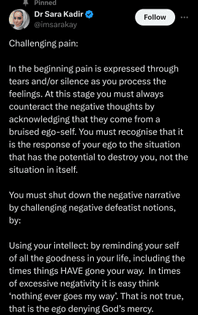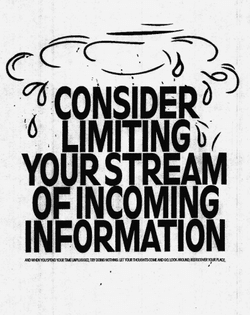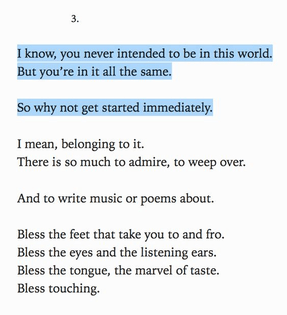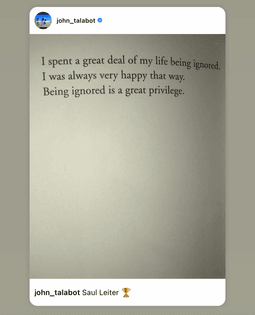How to use the I-Ching
This is a special book that has helped me get through many tough situations through the years -- in particular, things that I had questions about but did not know the answer to, things where I was desperate for guidance -- aka, "big questions", things that aren't like "what should I eat today".
It is a book of divination, the oldest continually-in-print book on earth, originating from ancient China. Its mechanism of action is mysterious and nobody quite knows its origins, since the technique was passed down orally before there was a means to encode it in print. But since then, its been developed by many of the ancient sages, and is considered the earliest Taoist text.
(Note: The below refers to the Richard Wilhelm translation which can be found online here: http://www2.unipr.it/~deyoung/I_Ching_Wilhelm_Translation.html)
The I-Ching is comprised of Hexagrams, or various arrangements of six broken or unbroken lines like so:
---------
---------
---- ----
---- ----
---------
---------
or
---- ----
---------
---------
---- ----
---------
---------
etc.
There are 64 possible combinations of lines (a hexagram), and each hexagram describes a specific situation. In the entry on each hexagram there's a Judgement and an Image, and further, each "changing line" (as they're called) then has its own more specific judgement on the situation. Reading the Judgement, Image and associated changing line forms the answer to your question.
The precision of the I-Ching is uncanny and deeply mysterious. The answers one receives from it can be so intimate, personal, and wise as to render one speechless. And so, when using it, its important that you approach it with humility. We do not know how it works, but it seems to get at the core of Reality somehow, and as such is a divine text and should be treated as such. After years and years of using it, I still respond with the same sense of impossible awe at its responses to my questions.
(Before you continue, read the introduction in the book. It's by Carl Jung and provides a good overview of the mysticism behind the text.)
Instructions on How to use the I-Ching
There are layers of ancient technical aspects to the I-Ching, but fundamentally it's easy to use and the more technical aspects are unnecessary when first getting started. All you need to know is how to form the hexagram. I'll try to keep it as simple as possible below.
(Once you know how to do it one can ask a question and roll a hexagram in about a minute, but again, when first getting started it's important to be meticulous so as to be sure there are no mistakes in the process.)
1
Get three of the same coins (pennies are preferrable becase they are the lightest)
2
Get a piece of paper and a pen. Personally, I keep a journal of my questions as I like to review them over time. Often, as time progresses, the meaning in the hexagram grows and for really big questions it can be good to review
3
Write your question on the paper at the top
4
Then below, draw six horizontal lines stacked on top of one another, with enough space to write in between. Starting from the bottom space, number each from 1-6. eg
(6)
---------------
(5)
---------------
(4)
---------------
(3)
---------------
(2)
---------------
(1)
---------------
5
Now, take the three coins into your hand and, thinking of the question you want to ask, shake the coins really well and let them drop. Be of calm mind when you do this; be in a quiet place.
6
This is crucial! Look at the coins and notice the face of each coin as it has landed on the ground. Heads = 2, Tails = 3. Add up the total and write that number next to the (1) space in the diagram you drew out above.
There are four possible combinations you can roll:
tails + tails + tails = 3+3+3 = 9
tails + tails + heads = 3+3+2 = 8
tails + heads + heads = 3+2+2 = 7
heads + heads + heads = 2+2+2 = 6
7
You will do this six times, with each drop representing an individual line in a hexagram
8
Once you're done rolling six times and have a number in each space, draw a vertical dividing line downwards (making a column like in a spreadsheet):
(6) 8 |
---------------
(5) 9 |
---------------
(4) 7 |
---------------
(3) 6 |
---------------
(2) 8 |
---------------
(1) 7 |
---------------
9
Now it's time to draw your hexagram lines.
10
Starting from the bottom, note if the number is divisible by two. If it is, it's a broken (yin) line. If it's not, it is a solid line (yang). Fill in the second column in the table:
(6) 8 | --- ---
---------------
(5) 9 | -------
---------------
(4) 7 | -------
---------------
(3) 6 | --- ---
---------------
(2) 8 | --- ---
---------------
(1) 7 | -------
---------------
11
The very next step (and arguably the most important thing to get right) is to note which lines are a 6 or a 9 and mark them accordingly. If it's a 6 (broken), draw an x through the middle. If it's a 9 (unbroken), draw a circle:
(6) 8 | --- ---
---------------
(5) 9 | ---O---
---------------
(4) 7 | -------
---------------
(3) 6 | -- x --
---------------
(2) 8 | --- ---
---------------
(1) 7 | -------
---------------
These 6's and 9's are your changing lines. When you roll a hexagram and get changing lines, the Oracle has very specific info for you. You can think about changing lines as the situation and how it may evolve based on your actions. When a hexagram has no changing lines it tends to describe an unchanging situation, but is still important. It's the changing lines that can get unbelievably specific to your query / life. Make sure you mark them correctly.
12
And that's it -- now you've got your hexagram! Beside the little table draw it out:
------- -------
-------O------
---------------
------ x ------
------- -------
---------------
13
Now it's time to look it up in the book.
14
Go to the back of the book where there's the little fold out table. Starting from the bottom 3 lines in the hexagram you rolled, find the matching trigram (vertical column) and place your finger. Then look at the top three lines (horizontal column) and slide your finger out to find your hexagram number.
For example, if you rolled
-------
-------
-------
-------
-------
-------
that would be hexagram 1 (trigram of three solid lines, and another trigram of three solid lines).
In the example I've been using throughout above, it would be hexagram 17. Write that number under your hexagram.
15
Now go to the table of contents and find hexagram 17. Looking it up, one sees Following, page 71. Write the title above the hexagram and the page number below, beside the hexagram number.
16
Go to page 71 and read the entry, stopping at the section called the lines.
17
Now, look up which changing lines you had in your hexagram. In the example above, there's a changing line at line 3 and line 5, so read the entries for lines 3 and 5 in the chapter. This will be a direct commentary on your question and perhaps suggest a path forward. With two changing lines, the uppermost one is the most important. With three changing lines, the middle one is the most important.
And that's basically it. I would suggest waiting till you have a good question to ask and then, following the above instructions closely, ask the Oracle and see what it says. Be prepared however. The oracle is very honest; depending on the question, it can be helpful or stern. It can break illusions but also illuminate deep life questions that one just doesn't have an answer for, and open space for resolution. It's very helpful for getting out of binds. But it's also a stern teacher!
Once you've got the process down a bit and know how to roll hexagrams and look up answers I would suggest some further reading:
- Here's a great entry on the I-Ching basics: https://www.biroco.com/yijing/basics.htm
- Here’s how to deal with multiple changing lines. Its not uncommon to get 1-3+ changing lines in a hexagram; which one is the most important to read? https://gist.github.com/damassi/773d3d11cb84ec9b1e1f7d70b8cbb3dc
If you're just getting started and get multiple changing lines and feel confused, don't hesitate to roll again, asking for more guidance or clarity. Sometimes, however, asking multiple times will yield a reproach from the book, as if it is asking you to try harder to understand and to look back over what has already been discussed. Take these reproaches seriously.
Lastly, here's another reference that I frequently use in addition to the Wilhelm translation of the book. As there are lots of different I-Ching translations, it's sometimes interesting to comparatively read each for various hexagrams that have been rolled. But before then, the first couple chapters 1-5 provide a great overview on what the I-Ching is. Highly recommended reading: https://www.gnostic-book-of-changes.com/




